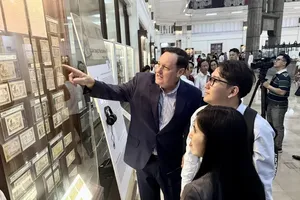 |
A Vietcombank staff introduces preferential loan package to a customer |
After the State Bank of Vietnam (SBV) decided to cut regulatory interest rates for the fourth time since the beginning of the year, lending rates of commercial banks have decreased by 1.5 percent-2 percent on loans. However, this measure is still not enough to promote credit flows.
To encourage city dwellers to borrow money, commercial banks have implemented many programs and solutions to support businesses and people. Specifically, after a week of implementing a package of VND 7,000 billion (US$294,342) with an interest rate of 8.8 percent a year, BVBank recently continued to launch a VND 1,000 billion preferential loan package with a discount of up to 2 percent per annum for small and medium businesses with interest rates from only 8.5 percent per year.
Similarly, Sacombank has a credit package of VND30,000 billion for individual customers to borrow at interest rates ranging from 7.5 percent per year up for production and business and 9 percent per year for consumer loans while it allocates a VND11,000 billion credit package with an interest rate from 6.2 percent per year for production development and business.
In addition to the launch of a VND3,000 billion credit package for businesses in the field of forestry and fishery with an interest rate of 1 percent-2 percent per year lower than the normal interest rate, Agribank has also allocated an additional VND10,000 billion package with an interest rate of 0.7 percent per year for small and medium enterprises to borrow additional working capital to implement production and business plans.
Deputy Director in charge of the Corporate Banking Division of SHB Dinh Ngoc Dung said that SHB not only implements short and medium-term credit programs for production and business enterprises with interest rates lower than 2 percent per year compared to conventional loans but also simplifies the lending process, reducing costs to lower lending interest rates to support businesses and people. In addition, SHB built a special program that suits each corporate customer to stimulate credit demand.
General Director of ACB Tu Tien Phat informed that in the first 6 months of 2023, ACB has implemented many solutions to stimulate credit demand through preferential loan programs of VND30,000 billion. The programs’ interest rates are reduced up to 3 percent per year compared to the common interest rates which will be widely applied to all customers, regardless of what kind of business.
According to estimates of securities companies, lending interest rates from the beginning of the year to now have decreased by about 1.5 percent-2 percent. Mortgage interest rates of many commercial banks are also offered at only 7 percent-8 percent a year, but in reality, there is still clear discrimination. Production and business enterprises with good credit quality just pay lending interest rates of less than 10 percent whereas their peers with low credit quality must pay interest rates on bank loans of 12 percent-17 percent per annum.
Economic-financial expert Le Xuan Nghia said that in the present context, one of the biggest risks of the Vietnamese economy today is that lending interest rates are still high, many businesses are having to interest rate is over 10 percent a year even though the State Bank has made many efforts to reduce the operating interest rate.
| Chief economist at BIDV Can Van Luc recommended that effective coordination between fiscal and monetary policies as well as other macro policies are needed in a bid to stimulate credit demand as well as support economic growth. At the same time, banks must have precise assessments of businesses’ current situation to remove shortcomings and problems. |
However, according to Mr. Nghia, the Fed is likely to stop raising interest rates by the end of this year and may reduce interest rates from the end of next year. Europe may also stop raising interest rates from the end of the year as inflation falls faster than anticipated. This is an opportunity for the State Bank to further reduce interest rates and support businesses.
Talking about whether to loosen monetary policy to support economic growth, Mr. Tran Ngoc Bau - CEO of Wigroup – a company providing financial data and market research – said that during the period. Amid the current difficult economic situation, it is most urgent to promote capital for the economy and relax regulations for the banking system, or else the country will fall into the circle of recession – a specific sort of vicious cycle, with cascading declines in output, employment, income, and sales that feedback into a further drop in output, spreading rapidly from industry to industry – which will be difficult to get out of.
However, Mr. Bau is also concerned that boosting credit in the current state of weak consumer demand will result in mistakes as credit flow will run into the risk area. However, this is a necessary solution to relieve the lack of capital in the economy. After everything is more balanced, the adjustment plan can be considered.
Meanwhile, Chief economist for Vietnam in Vietnam of the Asian Development Bank Nguyen Ba Hung said that although the policy of reducing interest rates of the State Bank has had a positive impact on the market, the credit growth rate in the first 7 months of 2023 is still at a low level. According to him, the effective interest rate reduction or not depends much on the credit demand of the economy. Therefore, the operating agency should have a flexible policy to support credit but should not be too loose, because it can cause an "asset bubble" when the cash flow does not flow into the real economy but into speculators.
According to Mr. Hung, when enterprises have not yet generated a profit higher than the borrowing interest rate, they still do not borrow capital to invest and serve production activities. Accordingly, the impact of monetary policy on aggregate demand is only an indirect effect through credit supply, while the impact of fiscal policy and policies to stimulate consumption and private investment will have a direct impact on the national economy.














)

)







